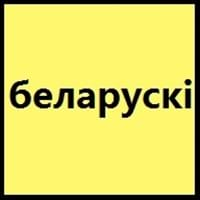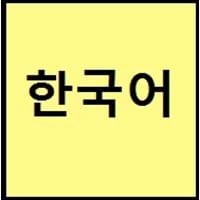Countries
Belarus, Poland
China, Jilin Province, North Korea, South Korea, Yanbian
National Language
Belarus, Gambia
North Korea, South Korea
Second Language
Poland
Not spoken in any of the countries
Speaking Continents
Asia
Asia
Minority Language
Czech Republic, Lithuania, Ukraine
Japan, People's Republic of China, Russia, United States of America
Regulated By
National Academy of Sciences of Belarus, National Languages Committee
The National Institute of the Korean Language
Interesting Facts
- Since 1918, Belarusian has been the official language of Belarus.
- Belarusian include many loanwords from Polish language.
- Korean has borrowed words from English and Chinese.
- Korean has two counting systems. First, is based on Chinese characters and numbers are similar to Chinese numbers, and second counting system is from words unique to Korea.
Similar To
Russian and Ukrainian
Chinese and Japanese languages
Derived From
Not Available
Not Available
Alphabets in
Belarusian-Alphabets.jpg#200
Korean-Alphabets.jpg#200
Writing Direction
Not Available
Left-To-Right, Horizontal, Top-To-Bottom
Language Levels
Not Available
Time Taken to Learn
Not Available
Hello
dobry dzień
안녕하세요. (annyeonghaseyo.)
Thank You
Dziakuj
감사합니다 (gamsahabnida)
How Are You?
Jak vy ?
어떻게 지내세요? (eotteohge jinaeseyo?)
Good Night
Dabranač
안녕히 주무세요 (annyeonghi jumuseyo)
Good Evening
Dobry viečar
안녕하세요 (annyeonghaseyo.)
Good Afternoon
dobry dzień
안녕하십니까 (annyeong hashimnikka)
Good Morning
Dobraj ranicy
안녕히 주무셨어요 (An-yŏng-hi ju-mu-shŏ-ssŏ-yo)
Please
Kali laska
하십시오 (hasibsio)
Sorry
Vybačajcie
죄송합니다 (joesonghabnida)
Bye
da pabačennia
안녕 (annyeong)
I Love You
JA liubliu ciabie
당신을 사랑합니다 (dangsin-eul salanghabnida)
Excuse Me
Vybačajcie
실례합니다 (sillyehabnida)
Dialect 1
North-Eastern Belarusian
Jeju
Where They Speak
North-East Belarus
South Korea
How Many People Speak
Not Available
Dialect 2
South-Western Belarusian
Gyeongsang
Where They Speak
South-West Belarus
South Korea
How Many People Speak
Not Available
Dialect 3
Middle Belarusian
Hamgyŏng
Where They Speak
Middle Belarus
China, North Korea
Second Language Speakers
Not Available
Native Name
Беларуская мова (Bielaruskaja mova)
한국어 (조선말)
Alternative Names
Belarusan, Belorussian, Bielorussian, Byelorussian, White Russian, White Ruthenian
Hanguk Mal, Hanguk Uh
French Name
biélorusse
coréen
German Name
Weißrussisch
Koreanisch
Pronunciation
Not Available
Not Available
Ethnicity
Belarusians
Koreans
Origin
18th century
Before 1st century
Language Family
Indo-European Family
Koreanic Family
Subgroup
Slavic
Not Available
Branch
Eastern
Not Available
Early Forms
Old East Slavic
Old Korean, Middle Korean and Korean
Standard Forms
Belarusian
Pluricentric Standard Korean, South Korean standard and North Korean standard
Signed Forms
Not Available
Korean Sign Language
Scope
Individual
Individual
ISO 639 6
Not Available
Not Available
Glottocode
bela1254
kore1280
Linguasphere
53-AAA-eb < 53-AAA-e (varieties: 53-AAA-eba to 53-AAA-ebg)
45-AAA
Language Type
Living
Living
Language Linguistic Typology
Not Available
Subject-Object-Verb
Language Morphological Typology
Not Available
Agglutinative
All Belarusian and Korean Dialects
Most languages have dialects where each dialect differ from other dialect with respect to grammar and vocabulary. Here you will get to know all Belarusian and Korean dialects. Various dialects of Belarusian and Korean language differ in their pronunciations and words. Dialects of Belarusian are spoken in different Belarusian Speaking Countries whereas Korean Dialects are spoken in different Korean speaking countries. Also the number of people speaking Belarusian vs Korean Dialects varies from few thousands to many millions. Some of the Belarusian dialects include: North-Eastern Belarusian, South-Western Belarusian. Korean dialects include: Jeju , Gyeongsang. Also learn about dialects in South American Languages and North American Languages.
Belarusian and Korean Speaking population
Belarusian and Korean speaking population is one of the factors based on which Belarusian and Korean languages can be compared. The total count of Belarusian and Korean Speaking population in percentage is also given. The percentage of people speaking Belarusian language is 0.11 % whereas the percentage of people speaking Korean language is 1.14 %. When we compare the speaking population of any two languages we get to know which of two languages is more popular. Find more details about how many people speak Belarusian and Korean on Belarusian vs Korean where you will get native speakers, speaking population in percentage and native names.
Belarusian and Korean Language Codes
Belarusian and Korean language codes are used in those applications where using language names are tedious. Belarusian and Korean Language Codes include all the international language codes, glottocodes and linguasphere.





